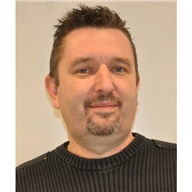The successful roll-out of heat networks depends on whether they can guarantee that users’ (heat) requirements and comfort are provided for at any time of day. A heat network must therefore be inherently flexible and permit local additional heating. Fourth-generation thermal networks, as they are known, can meet this need, but the technologies to do this in a cost-effective and energyefficient way are still in their infancy. Functions such as network control, automatic fault detection (in order to quickly detect losses) and thermal storage are also essential in ensuring successful integration into the district heating system.
In the case of deep geothermal energy, the temperature of the available heat is high enough to feed a heat grid and supply a limited amount of electricity at the same time. The GeoWatt project served to develop cost-efficiency methods for both exploring the deep subsoil and dimensioning and controlling geothermal systems.
Finally, EnergyVille developed a number of concept studies for the Genk region to serve as practical examples of fourth generation networks. In addition to industrial residual heat, geothermal energy and surface water, the unique value of the flooded Limburg coal mines was also evaluated as a potential source.


